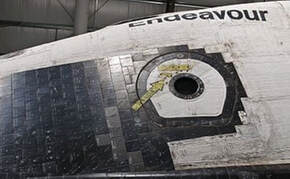 Fig 1: Thermal Protection Tiles on the Space Shuttle Fig 1: Thermal Protection Tiles on the Space Shuttle For the past decade, there has been a great resurgence in research into the field of Hypersonics[1]. A Hypersonic vehicle, contrary to the better-known supersonic vehicles like the decommissioned Concorde plane and the SR-71 Blackbird which may travel at speeds of up to Mach 3 or 3500 km/h[2], can be much faster with speeds in excess of Mach 5 and speeds approaching 10000 km/h. The vast majority of Hypersonic vehicles that have flown have been different variants of rockets, taking man or other payloads into outer space. These include the Saturn V, Space Shuttle and the Russian Soyuz rockets. Over a year ago, Russia unveiled its new weapon system called Avangard. A missile system reaching speeds of over 11000 km/h, able to reach a target in from Russia to the mainland US in under 15 minutes. Recently, SpaceX launched the SpaceX Dragon 2 with the Crew Dragon module[3] – the first US developed and manufactured spacecraft with the capability to take crews to and from the International Space Station since the retirement of the Space Shuttle. Since the 1980s, significant research has been expended to develop hypersonic transport for both civil and military applications. For two decades, the US in particular invested billions to develop a Singe Stage to Orbit (SSTO) spacecraft and passenger airliner. Named the National Aerospace Plane (NASP) program, this was eventually cancelled in the mid-1990s[4]. The major factor that eventually prevented the development of these projects was that technology had not yet matured to a level where such an ambitious concept could be realised. But why is it so hard to develop Hypersonic vehicles that can fly? Developing a Hypersonic vehicle is an incredibly complicated, multidisciplinary problem. These include designing the Thermal Protection System, Propulsion Systems, Control Systems etc. If we focus on one of these problems – i.e. the problem of designing an efficient heat shield design to withstand the very high temperatures at either ascent or re-entry to the atmosphere – it becomes very clear that novel concepts are required for future flight vehicles. SpaceX are already demonstrating with their existing Falcon and future Starship vehicles that reusability is a key factor for keeping costs down.  Fig 2: Schematic illustration of transpiration cooling Fig 2: Schematic illustration of transpiration cooling A promising technology which has come to the fore in recent years is Transpiration Cooling. Transpiration cooling is the introduction of a cool layer of fluid through a porous material between the component and the hot freestream flow, reducing the heat flux to the material. Ideally, the hot external gas is displaced from the surface by the introduction of the film which forms a low temperature buffer layer and increases the overall boundary layer thickness, thus, reducing both the wall normal temperature and velocity gradients. Transpiration cooling is an active cooling technology that can enable fully re-usable hypersonic vehicles. It relies on a gaseous or liquid fluid which is fed through a porous wall. The coolant leads to internal convective cooling between the porous solid and the fluid, and a protective film that keeps the hot external gas away from the surface. Transpiration cooling provides this alternative flexibility in the design of future re-usable hypersonic vehicles. However, whilst transpiration cooling has potentially great civil research benefits – the ability deploy fully reusable spacecraft may enable the usage of Hypersonic vehicles in a similar form to our current civil aircraft industry – transpiration cooling has great tactical benefits. Using transpiration cooling over more the more commonly utilised ablative heat shields has additional benefits of maintaining the aerodynamic characteristics of, for example, a sharp leading edge. Better aerodynamics can lead to more effective and efficient offensive or defence capabilities. [1] Hypersonic Missiles Are Unstoppable. And They’re Starting a New Global Arms Race. New York Times https://www.nytimes.com/2019/06/19/magazine/hypersonic-missiles.html
[2] High Temperature and High Speed Gas Dynamics, Anderson [3] NASA’s SpaceX Crew-1 Astronauts Headed to International Space Station | NASA [4] Facing the Heat Barrier, A History of Hypersonics, T.A Heppenheimer
0 Comments
Leave a Reply. |
Imran NavedPhD in Hypersonics, University of Oxford ArchivesCategories |

 RSS Feed
RSS Feed
